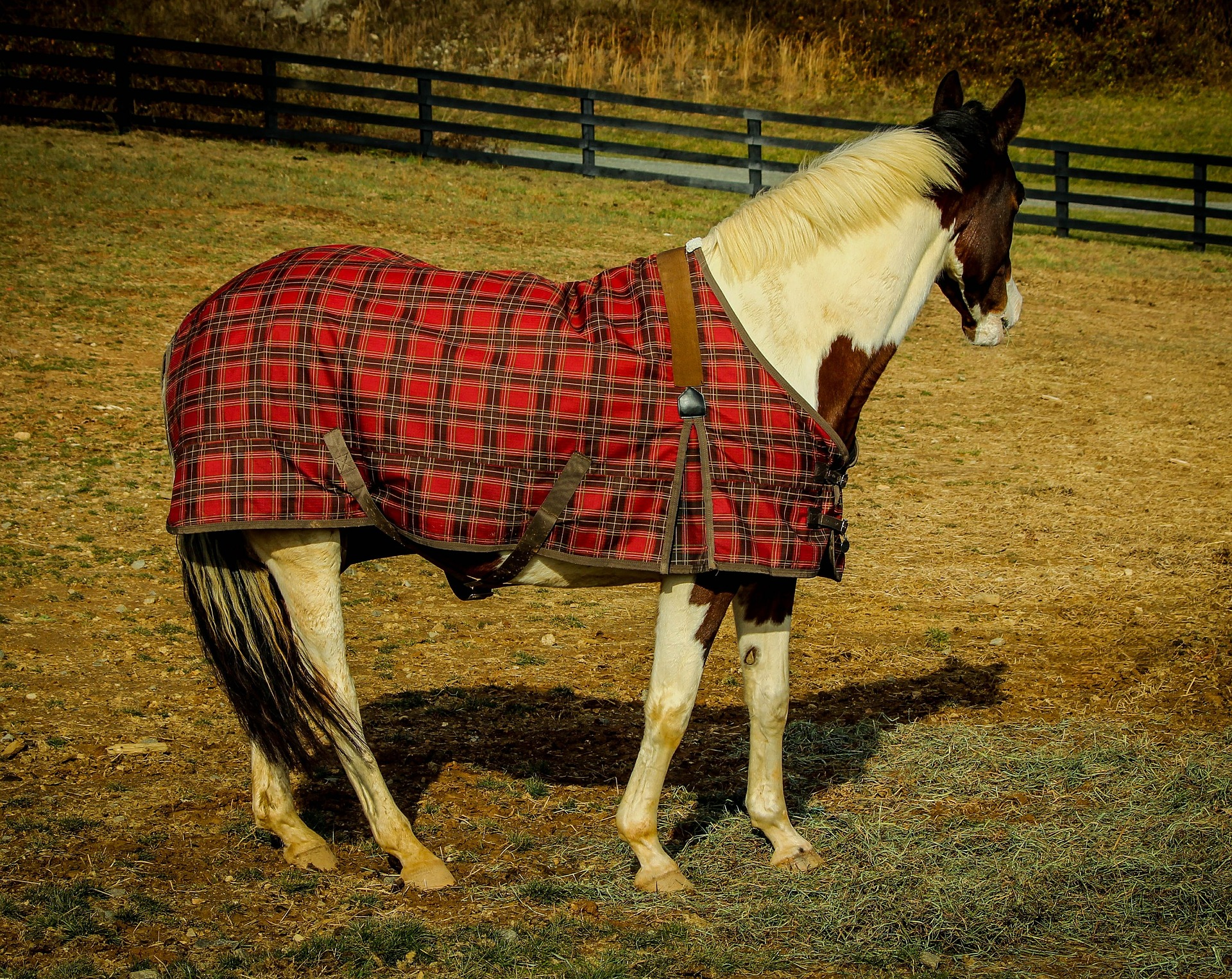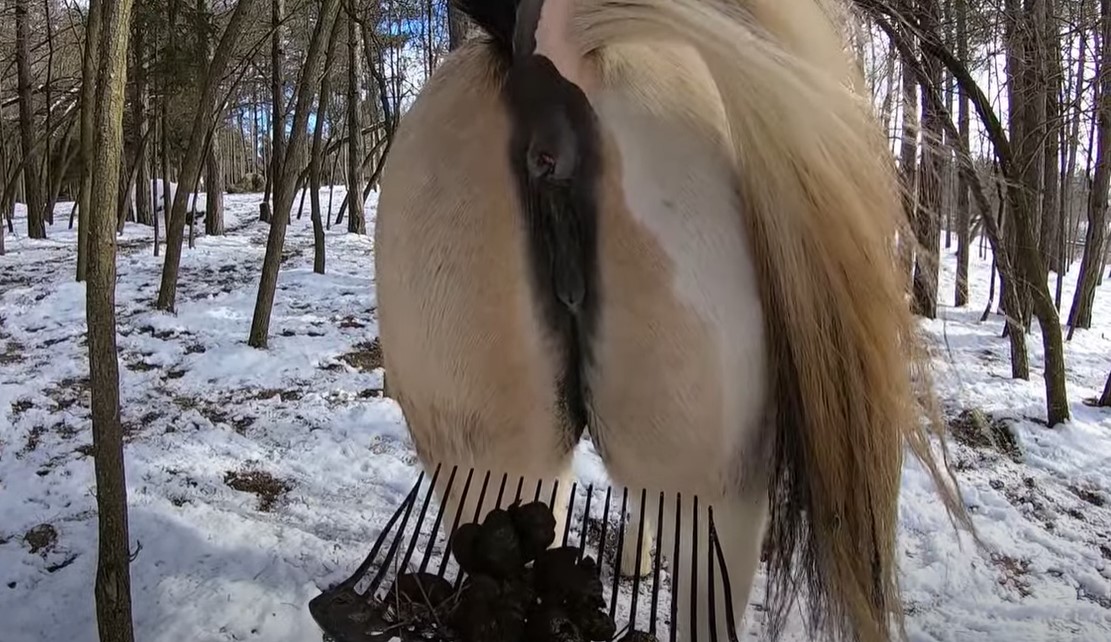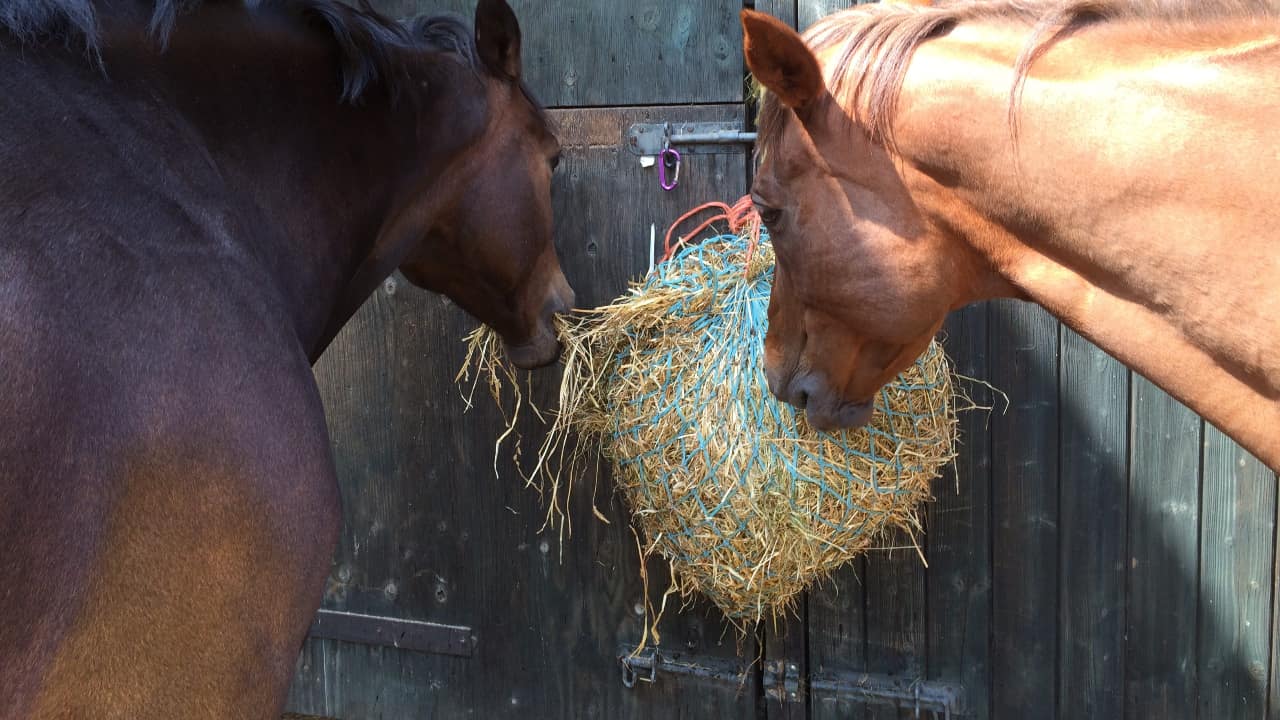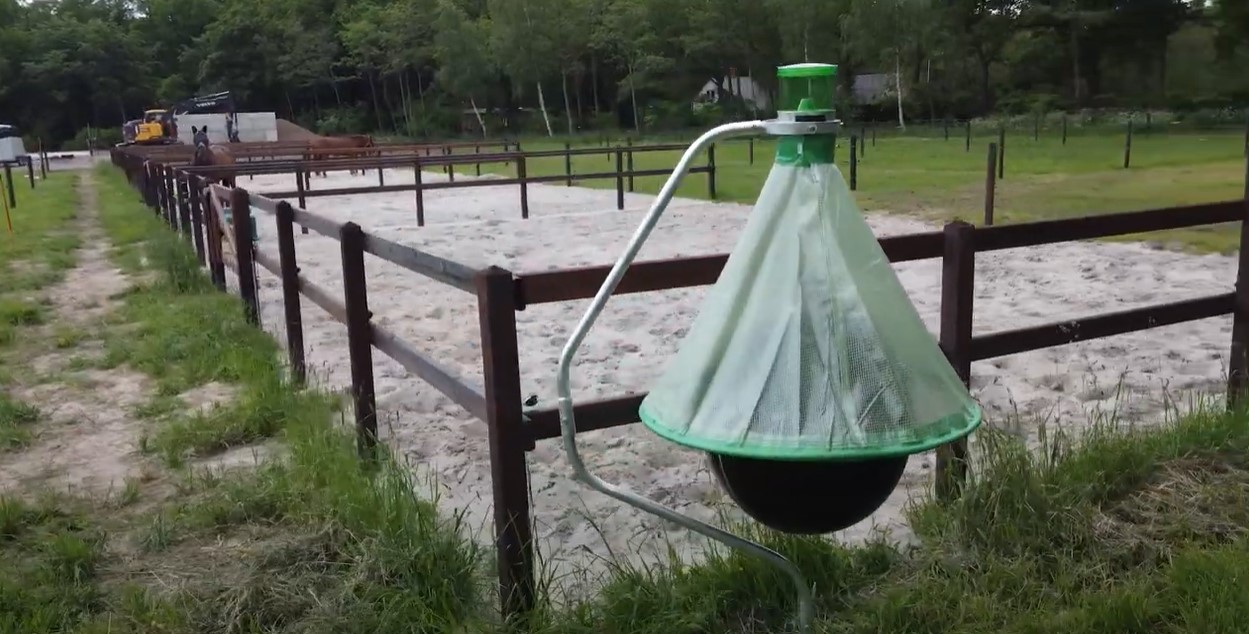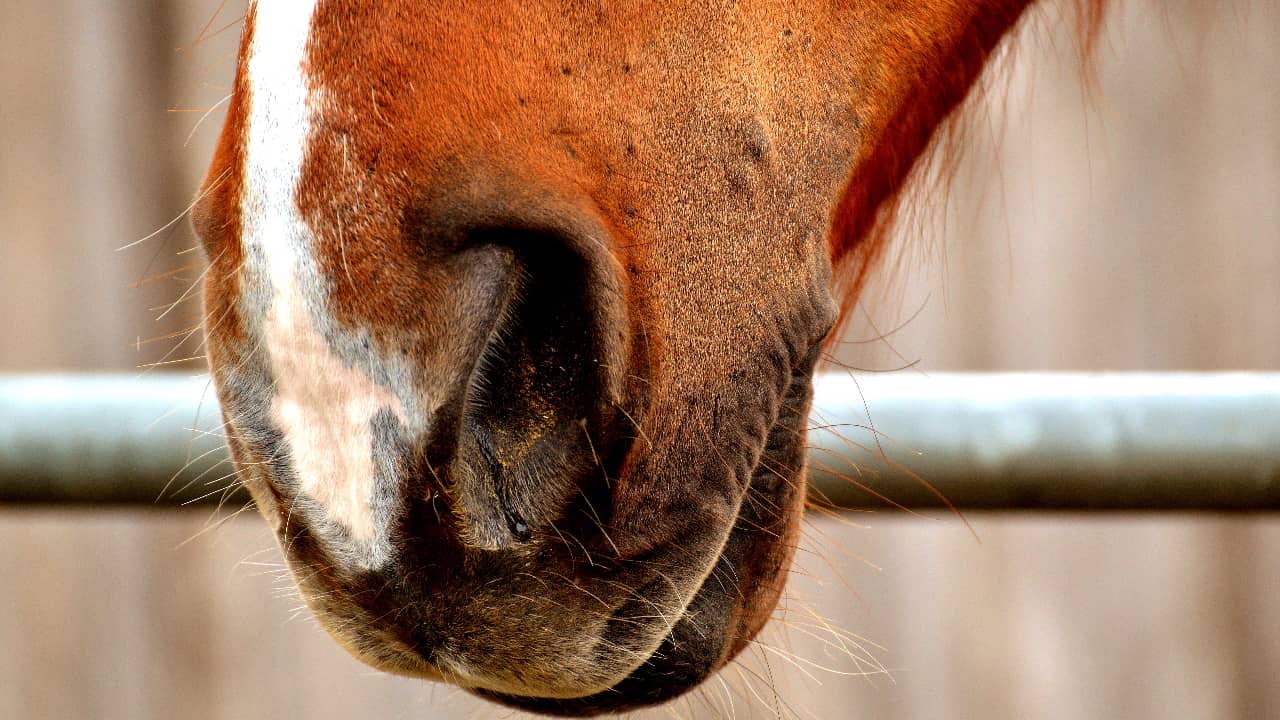Using a horse blanket in the winter is a great way to keep your equine friend cozy, especially if it's living outside. However, when it comes to selecting horse blankets, there's a lot of options out there. To get the most out of your investment, it's important to choose a blanket that's suitable for the season. In this guide, we're going to take a look at the different types of blankets, how to fit them and any special features to look out for. This way you'll confidently be able to choose the best horse blankets.
How Can I Tell if My Horse Needs a Turnout Blanket?
Not all horses need to wear blankets, sheets or rugs, and before you choose to use one, there are many things to take into consideration. Below we'll explore all the different aspects to consider before you put a blanket on your horse.
1. Body Condition
It's a fact that body fat helps to keep us humans warm and the same applies to horses. It's important to know how much a horse weighs.
An underweight or slender horse will feel the cold a lot more than an overweight or heavy breed of horse. Horses burn calories to keep warm this means that a cold, underweight horse will lose weight in the cold.
This is why it's important to use blankets to keep an underweight horse warm. An overweight horse, on the other hand, will benefit more from using its calories and body fat to keep warm without a blanket.
2. Coat and Body Type
Some horses have more hair than others so it seems obvious that shorter-haired horses will benefit more from a turnout blanket than longer-haired ones.
Some horse breeds that come from colder climates will have no problem in producing their own thick wooly coats. These horses tend to be 'easy keepers' meaning that they maintain their body condition well too. If your horse has enough of its own hair to keep warm then you won't have to blanket it throughout the cold months.
Horse breeds from warmer climates, however, will find it impossible to produce sufficient hair to see them through the winter in a cold climate without a blanket. If your horse has a fine coat then chances are that it will need a blanket both in and out of the stable. Horses who are clipped are also more exposed to the cold, especially those with a full clip.
If you remove your horse's hair with equine clippers then you should definitely protect them from the cold with blankets.
3. Age
An older horse will definitely feel the cold more than a young horse and younger horses also tend to be more active, which also keeps them warm.
In the wintertime, you don't want older horses burning up precious calories to maintain body heat. This is why you should always use a warm horse blanket on older horses in the winter to keep them warm and dry.
4. Climate
If your horse lives in an extremely cold climate with frequent ice and snow, then even if it has a thick coat, it may still need to wear a turnout blanket. For colder climates, you should choose the heaviest and warmest turnout blankets for your horse.
If you live in a mild climate, with little ice or snow then you may want to choose a lighter turnout blanket.
If you live in an equatorial region, where the temperature doesn't fluctuate much but you get a lot of rain, then a rain sheet may be a better option for your horse.
5. Lower Critical Temperature (LCT)
The lower critical temperature of a horse is the point where its body starts to consume extra calories to keep warm. When a horse reaches this point, it will need extra food or blankets to prevent it from losing weight. A horse that has constant access to forage will have a higher LCT than those who have a limited access diet.
By recognizing your horses' LCT, you can use both blankets and your horse's diet to provide optimum warmth throughout the winter.
6. Living Conditions
When it comes to choosing a turnout blanket according to your horses' living conditions there are several things to consider. Firstly, is your horse living inside or outside during winter or a mix of both? If your horse is turned out during the day and stabled in the night time then you might need both an indoor and outdoor blanket.
If your barn is well insulated, warm and draft proof then you may not need stable blankets. However, if your horse is living outside over the winter but has plenty of shelter then it will need lighter turnout blankets than an outdoor horse who is living in exposed conditions. For extremely cold and exposed environments, you may want to buy a blanket with extra protection such as a hood or belly cover.
Different Types of Horse Blankets

Horses are kept in a range of different living environments. Some will live in hot climates and some in cold, some horses live outdoors and others will have the luxury of a stable. It's for this reason that horse blankets are made to suit a range of different living arrangements. Let's take a look at the different types of horse blankets below. This way you'll know exactly what type of blanket to go for.
1. Turnout Blankets
A turnout blanket is used whenever the horse is outside or “turned out” in cold weather. They're usually heavy and durable with a waterproof outer and filled, insulated liner. Turnout blankets are windproof, waterproof and protect the horse against the outside elements. They usually come in three types, lightweight, medium weight and heavy weight.
2. Indoor/Stable Blankets
A stable blanket is designed to be used on a horse whenever it’s inside. Stable blankets are generally made with softer materials and aren't waterproof. They're easier to clean too which is good because they're bound to acquire lots of stable stains.
3. Summer Fly Sheet
A summer sheet is a very fine blanket that’s usually made from a breathable mesh and they don't have a fill. They're usually made from light, breathable materials such as cotton. These equine fly sheets are used in the summer to keep biting insects off the horse. You can also use a fly mask for horses, and also consider setting up fly traps around the ranch.
Summer fly sheets also do a great job of protecting the horse's coat from sun bleaching or keeping them clean before a show.
4. Horse Cooler
These are thin sheets that can be used in both the summer or winter. They're designed to help cool your horse off when it's been sweating or to help them dry off after a shower. Horse coolers are highly moisture-wicking and they help to regulate the horse's body temperature. In the winter, it's important that your horse is dry before putting a blanket on. Wetness under a blanket can cause a chill.
How to Measure and Fit a Horse Blanket
Blankets must fit your horse for two reasons. Firstly, a poorly fitting blanket can slip and become tangled around your horse which can be very dangerous. It can also cause skin rubbings and even scars.
Secondly, if the blanket doesn’t fit well then your horse won't be getting the maximum amount of heat from it.
By using our guide below, you'll be sure to size and fit your new horse blanket correctly so that it's safe and comfortable for your horse.
1. Measuring for a Blanket
To measure a horse for a blanket, you'll need a soft measuring tape and a helper. Before you take the measurement, make sure that your horse is standing square on a flat level surface. Place the start of the measuring tape in the center of your horse's chest and have your helper hold it in place. Gently pull the tape around your horse, incorporating the widest part of its shoulder. Keep unwinding the tape over the side of the torso, flank and thigh, and then end the measurement in the center of the tail. This reading will be your horses blanket size.
If you prefer a shorter blanket or tail flap then deduct a couple of inches from your reading.
2. Size Guide
Horse blankets are often sold in even numbers, 12, 14 and 16 inches for example. If your horse measures in at an odd number then it's always better to round up rather than down. If you're planning to use layers under the blanket then always add a few inches to your horses blanket size to accommodate them.
3. Fitting Tips
When you're fitting the blanket always work from the front to the back. Start with the chest straps then move on to the surcingles and then finish with the leg straps or tail string. When you're removing the blanket, do it in the reverse direction. By doing it this way, the blanket is more secure should your horse make any sudden, unexpected moves.
If the blanket fits well then you should be able to pass your flat had all around the neck and chest area of the blanket. The blanket shouldn't create any pressure on the withers as your horse moves its neck around.
Surcingles shouldn't be loose so that your horse can catch it's leg in them or so tight that they cause discomfort or rubbing. Tack that's too tight can also lead to forming bad habits such as your horse always rolling on its back to relieve the itch and discomfort.
The blanket should look well balanced and shouldn't drop below your horse's knees. If your horse is wide in the chest then you should choose a blanket with shoulder gussets.
How to Choose Equine Winter Blankets
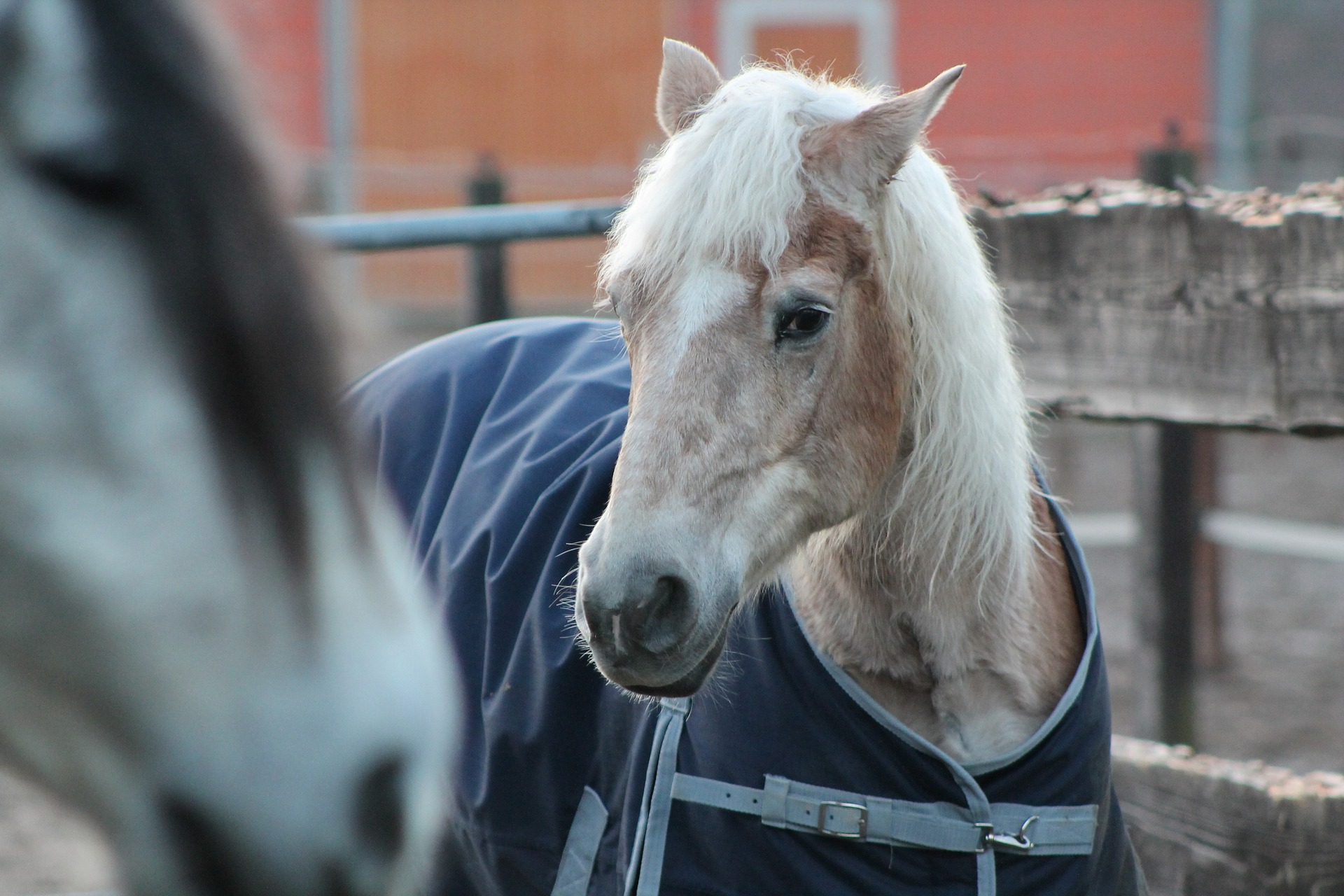
When it comes to choosing the best horse blanket for cold weather, there are a few important things to consider. We've outlined the most important factors to look at before you make your final purchase.
1. Type
This is the most important thing to determine about the blanket that you want to buy. Will you be using it on a horse who lives indoors or one that winters outside? Outdoor winter horse blankets will be too heavy for the stable and stable blankets won't offer much protection outdoors. This is why you must choose the right type of blanket for the job.
2. Thickness
The thinnest type of blanket for a horse is a summer sheet and these are made of lightweight materials. If you want to keep your horse warm then don't choose a thin sheet type blanket.
Winter blankets generally come in three levels of thickness. Lightweight blankets are the ones to choose if you live in a mild climate or if your horse lives mostly indoors with little turnout during the winter. Medium weight blankets offer the next level in warmth and are a bit thicker and heavier than lightweight ones. These are better for a horse who spends a reasonable amount of time outdoors in the winter.
If you live in a cold climate and your horse spends the whole winter outside then you should choose heavy weight winter horse blankets. They're thick, heavy and do a great job of keeping your horse warm in tough, frozen conditions. A heavyweight winter turnout blanket is the warmest horse blanket.
3. Materials
A turnout blanket needs to be tough and durable so this is why they're often made of synthetic materials such as Nylon and Polyester. Nylon is very durable and Polyester is light and breathable so it's good to look for turnout blankets made from a Nylon/Poly mix. The outer shell of a horse blanket is often measured in denier. The denier represents the durability meaning that the higher denier blankets are tougher ones.
When it comes to linings it's good to look out for breathable materials with wicking capabilities. This is good in case your horse develops a light sweat under the blanket on a sunny day. They may especially be at risk to this if they're wearing medium weight or heavy weight turnout blankets.
4. Special Features
If you have a horse who lives in a herd or likes to rub on fences and abuse their blanket then look for ones made with extra durable, rip proof materials. If you live in a particularly cold climate then look for blankets that have extra protection such as neck and belly coverings and a tail flap.
However, if your horse is particularly wide around the chest or shoulders then you should look for blankets with shoulder gussets. Shoulder gussets are extra pleats of material which allow for comfortable movement around the shoulder.
If you're looking for precision fitting and the ultimate in warmth and comfort then choose turtleneck horse blankets.
Horse Blanket Cleaning and Care Tips
When you've found your perfect horse blanket you want it to last a long time and the best way to prolong its life is by taking good care of it. You'll find out everything you need to know about maintaining your new blanket in our guide below.
Cleaning and Maintenance
Horse blankets are pretty big so sometimes it's not as straightforward as putting them in your washing machine. Even though some manufacturers suggest machine washing, it can be hard to find a machine large enough to put one in. This is why a lot of people opt to send their blankets away for specialist cleaning. If you do have a suitable machine to wash your horse blanket in then there are few things you need to take into account.
First, it's a good idea to remove any dirt, hairs and debris from the blanket. This is so that they don't clog up the machine. Next, you should put the blanket into some kind of fabric or mesh beg for the wash cycle. This is so that straps and buckles don't become tangled and twisted. Lastly, you must wash the blanket at the right temperature and with the right detergent. Always follow manufacturers guidelines fully otherwise you may end up removing the waterproofing of outdoor blankets.
When it comes to drying your blanket you shouldn't assume that it can go in the drying machine. Always check manufacturers instructions first and if you have doubts then always opt for line drying.
Storing and Maintenance
It's a good idea to check your blanket regularly for small rips and tears. It's better to catch them in the early stages before they become irreparable gaping holes. Eventually, a waterproof horse blanket will need to be re waterproofed at some point. Luckily, this can usually be done at home using the recommended products. When it comes to storing your blanket away for the season, always make sure that it's clean and dry.
If a blanket is stored away while it's damp and dirty, chances are it will be moldy and rotted when the time comes for using it again. Using a vacuum bag is the ideal way to store away a horse blanket when it’s not in use.
Reviews of Five of the Best Turnout Blankets For Horses on the Market
If you need some ideas to get you started in your search for the best winter horse blanket to keep your horse warm, then take a look at our reviews below.
1. Snuggit Horse Turnout Blanket by Tough 1
This is a durable heavy-duty turnout blanket from Tough 1 with a 1200 denier outer and a 300-gram fill and tail flap. This makes it a great choice for horses living in colder climates. It has a special snuggit, adjustable neck closure that will provide a close and comfortable fit for your horse. The outer shell is made from tough rip stop polyester and it's fully waterproof.
It's fitted with cross surcingles, adjustable leg straps and an adjustable double buckle, snap front closure. This is a close-fitting blanket but the shoulder gussets allow for plenty of freedom of movement. It's available in lots of sizes and eleven unique colors.
2. Heavy Duty Horse Turnout Blanket by AJ Tack Wholesale
This premium blanket from AJ Tack Wholesale is heavyweight, waterproof, breathable and sure to keep your horse warm. It has a durable 1200 denier rip stop poly-nylon outer shell and cozy 400-gram polyfill insulation with smooth black nylon liner, all held together with reinforced stitching. It has adjustable, removable, elastic leg straps and crossover belly straps and buckles at the front closure along with hook and loop to hold it in place.
The extra features of this blanket include hood rings, shoulder gussets and a tail flap and fleece collar for extra comfort. Highly rated and available in a good range of sizes and four different colors.
3. Comfitec Heavy Neck and Blanket Combo by Weatherbeeta
This is a high quality, heavy-duty blanket from Weatherbeeta that comes with a built-in neck blanket and tail flap. This makes it a great blanket for horses that need an extra bit of warmth and the waterproof, 1200 denier ripstop outer shell is sure to keep mud and water out. A great feature of this blanket is that it’s breathable, the 120 denier oxford polyester lining along with the 360-gram polyfill promotes airflow while keeping your horse warm and dry.
This blanket is highly adjustable to ensure a secure fit. It features twin buckle front closure, twin low cross surcingles, removable leg straps, traditional shoulder gussets and a standard tail strap.
4. Soft Fleece Blanket by Tough 1
This is a very versatile blanket for Tough 1 that can be used all year round. It makes a great horse cooler in all seasons and also provides a bit of extra warmth in the winter months. It's made from a warm lightweight fleece material and is fitted with adjustable surcingles, single buckle front closure and tail string. This blanket isn't waterproof which means that it's better to use it indoors or outdoors underneath a waterproof blanket to provide an extra layer.
As a cooler, its lightweight design makes it easy to transport to shows, and will help regulate horses' body temperature after a workout. Used under other blankets this is the equivalent to a horse wearing thermals. This blanket from Tough 1 is a great blanket to have around the yard and is available in seven different colors.
5. Heavyweight Winter Stable Blanket by Derby Originals
This is a very well made, traditional stable blanket for your horse from Derby Originals. This will keep your horse very cozy in it's stable with its 300 grams of polyfill. The blanket is quilted throughout to ensure this fill stays evenly distributed throughout the blanket for maximum warmth. It can be fitted with a single or twin crossover surcingle and elastic or thick nylon leg straps and it has a double buckle front closure. The nylon outer shell of this stable blanket is water-resistant, helping to keep stains at bay and it's available in three traditional colors. This is an excellent blanket for indoor horses who need extra warmth during the day or night.
Conclusion
When it comes to choosing the most durable horse blanket then we'd have to recommend the Snuggit Turnout Blanket by Tough 1. Your horse is sure to find this blanket a treat in the winter and Tough 1 is a brand you can trust. The Snuggit Turnout comes in a huge range of colors that are sure to make your horse stand out in the barn. As well as looking great, this blanket has all the extra warm features such as a tail flap, it's highly durable and it's available at a very reasonable price.
Even if your horse doesn't need a blanket in the winter, it's always a good idea to have one on hand in case there is a sudden cold snap or snowfall. Even in the summertime, a thin blanket can come in handy to protect against the sun or flies. If you own a horse then chances are that you'll have to buy a blanket for your horse at some point. Choosing one might not be so daunting now that you know how to identify the best horse blankets for your needs.
